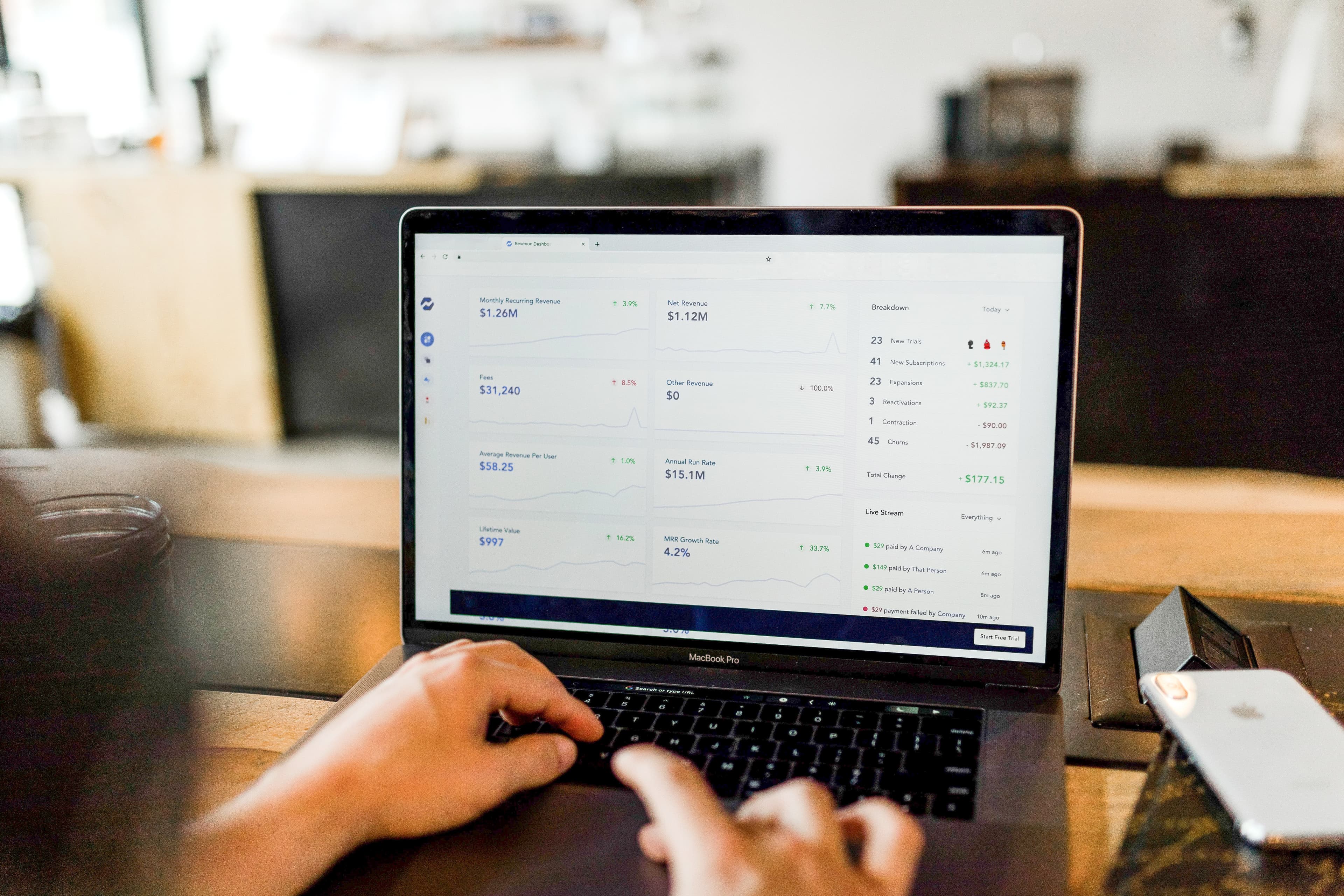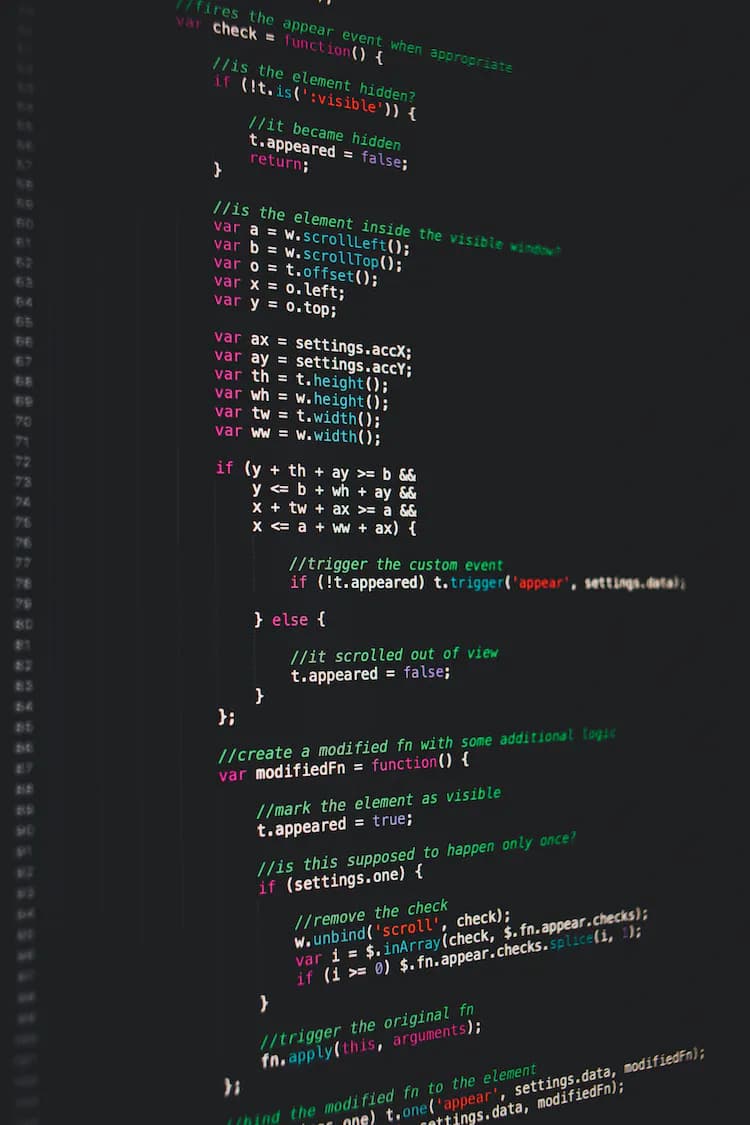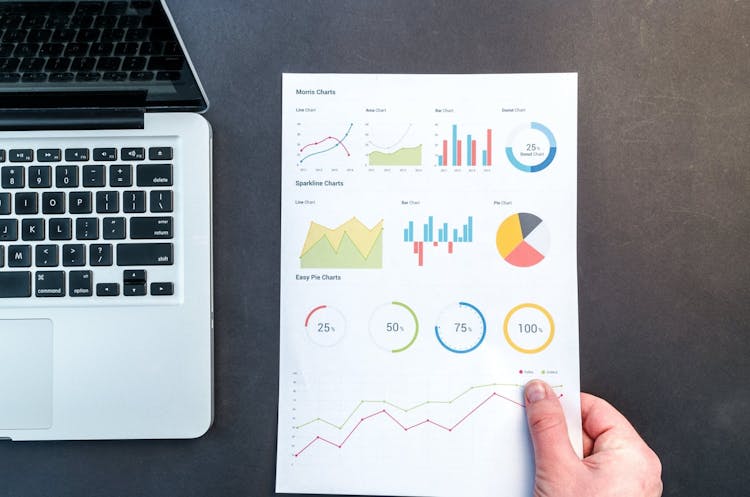Strategy & Advisory
The 4 pillars of conversion rate optimization 2022

Oliver Römer
Junior Frontend Developer

Simon Bauer
Digital Project Manager
Published
June 25th, 2021
Updated
November 15th, 2021
10 min

Increase revenue with the same marketing budget
How great would it be if there was a way to increase the revenue of an online shop without spending a penny more on marketing? This is probably the dream of all operators of e-commerce shops. The keyword here is Conversion Rate Optimization (CRO).
But how can this be achieved, what are the basics, and how do I calculate the conversion rate anyway?
Almost all online shops have one big goal: to achieve as many sales as possible. How often this is successful can be measured by the conversion rate. The logical goal of an online shop is therefore always to increase the conversion rate and thus also the sales. We want to explain more about this in this blog post.
What is the conversion rate?
It is a percentage figure that reveals how many of my visitors have taken an action on my website. The conversion rate does not necessarily have to - even though it is mostly used for this purpose - only represent purchases in connection with revenue. It can also be used as a measure for executed downloads or filling out a form. We will focus on the goal of selling in the following optimizations.
Your own conversion rate can be easily calculated. All conversions in a predefined period of time (or all conversions of the shop) are divided by the number of visitors in the same period of time (or total visitors) and then multiplied by 100 to obtain a percentage value.

As an example: An online shop for mobile phones has 100,000 visitors in a month. Of these 100,000 visitors, 2,500 order a mobile phone. 2,500 divided by 100,000 gives 0.025. Multiplied by 100, this gives 2.5. The conversion rate of the online shop is therefore 2.5%.
In principle, increasing the conversion rate is always a worthwhile goal - but what is a good conversion rate and what should you aim for?
The software-as-a-service company WordStream has determined the following values as typical conversion rates in the data that they have access to:
 https://www.wordstream.com/blog/ws/2014/03/17/what-is-a-good-conversion-rate
https://www.wordstream.com/blog/ws/2014/03/17/what-is-a-good-conversion-rate
This indicates that 25% have a conversion rate below one percent. Therefore, a value of 2.35 (the mean) sounds very good. However, it should also not be overlooked that 25% achieve a conversion rate of 5.31% and higher! A realistic goal should always be to surpass comparable competitors. To obtain a better overview, WordStream has also categorized conversion rates by industry:
 https://www.wordstream.com/blog/ws/2014/03/17/what-is-a-good-conversion-rate
https://www.wordstream.com/blog/ws/2014/03/17/what-is-a-good-conversion-rate
This chart shows that conversion rates vary widely by industry. It is important to consider that the financial sector achieves significantly more conversions than the B2C (Business to Customer) e-commerce business. Of course, this should not prevent you from striving for a higher conversion rate.
But how is it possible to increase the conversion rate? There is no secret formula that allows you to improve from one day to the next. However, there are certain basic rules that can be taken into account or should be and in many cases can offer a chance for long-term revenue growth.

Website Audit
Free
A full and transparent audit of how your website performs and what should be improved.

Microconsulting
Free
You have a question and need some advice. One of our experts will be in touch and offer you expertise.
1. Content optimisation
Content optimisation concerns the content and appearance of your website; technical aspects play a very subordinate role here. It is among other things about providing understandable and unambiguous content that makes the user experience as pleasant and straightforward as possible.
Information, information, information
"The best way to sell products and services is to add as much information as possible. Pages and pages and pages, videos and images."
https://pixelwerker.de/conversion-rate/#
One of the easiest but also most essential points of content optimisation is the description of my products for visitors to my website. A single frontal image of my product in the overall view raises almost more questions than it answers. Adequate image material with corresponding details will be able to dispel doubts or open questions from potential customers and thus make them more likely to make a purchase.
At the same time, a detailed description should also be available that justifies the price of the product. It should be noted that this should always be mentioned only after the respective values have been conveyed. In the course of this description, the so-called USPs (Unique Selling Points) - i.e., the points that differentiate me from my competition - should also be mentioned. Depending on the product or service, try to avoid technical jargon. The language of the internet is simple and thus will be more easily found through search engines.
The so-called value proposition is the added value that your customers receive through the purchase of the product. This can be highlighted by compelling arguments and examples from the website operator or by customer voices. It is important not to exaggerate or use superlatives ("world's best online shop" or similar) but to stick to the facts. For example, you should ask yourself what benefits your products or services offer to your customers and how they will enrich the lives of potential customers.
Shopify has summarised some examples of good value propositions here.
Look & feel
Of course, the look of your website should also represent your product or service. A meagre page will not really create trust for an unknown brand, and I will quickly look for alternatives. Appearance creates trust! The first impression counts more than you think. Here, so-called neuromarketing also plays a role.
"Though humans like to assume autonomy over our attention and decision-making, it is proposed that 95% of our decisions are made unconsciously and that our first response upon viewing a stimulus is often an emotional one. This is because our decisions are often governed by the Old Brain, which means that they are influenced by emotions and external cues outside our control."
https://bind.media/cro/how-to-boost-conversion-rates-with-neuromarketing/
Your content should focus on the essentials apart from the products and services and offer as few distractions as possible. Choose colours that reflect your company and harmonise. Purchase processes should be simplified as much as possible, and customers should be guided by the hand until the purchase is completed. It is also important that essential information that does not concern the product but rather questions about the order is easy to find for users. The so-called information optimisation is also a core area of conversion rate optimisation. We will address this in the following point.
2. Information optimisation
Information optimisation deals with the diverse questions that users of my site have apart from the products:
How much does shipping cost?
Is there a possibility of free shipping?
What are the return policies?
and the like.
Shipping costs
Shipping costs can be an absolute conversion killer. Too often, when searching for a product, one puts it in the cart full of joy, only to stumble upon additional shipping costs at the time of purchase that were not mentioned beforehand. According to a study, more than 50% of shoppers in the USA have abandoned a purchase due to shipping costs.
Ideally, you can offer free shipping. Another option to win users and work transparently is the possibility of free shipping for a certain purchase amount. It is important to display this information prominently on your site, for example through a banner.
Mac Cosmetics is a very good example of this.

Returns
The return options for items also have a significant impact on purchasing behavior or the abandonment of a purchase.
"The returns process must meet high standards and be as simple as possible. With these demands, it is not surprising that every other online shopper cancels the purchase if the shipping and return options offered are insufficient."
https://partner.idealo.com/de/blog/five-effective-tips-for-the-ultimate-shipping-strategy
It is important to inform users sufficiently about the return options. Ideally, in addition to free shipping, you offer free returns. Of course, some customers will order various product variants and only keep one of them. In contrast, perhaps spontaneous purchases will be made more quickly that will not be returned to you.
Extending the return period also has a significant impact. Legally, 14 days are provided, but Amazon, Zalando, and Co. have established a period of 30 days. With a longer return period, customers may get used to the product and decide to keep it.
FAQs
Ultimately, all shipping conditions and return information should be easy and quick to find. Best in your FAQs (Frequently Asked Questions). Answer all potential questions that arise during a purchase on your website. In general, you should cover the following topics:
Order process
Shipping (duration, price, etc...)
Returns
Payment
Customer account
Vouchers
Guarantee
A good example of this is https://www.gewusstwie.at/faq.
3. Technical optimisation
Technical conversion rate optimisation is quite diverse and covers aspects that affect not only the structure of online shops but also their technical implementation. This usability optimization includes aspects such as structure, navigation, filters, and search functions, but also involves optimizing for various devices or browser types, as well as improving loading times.
Structure and navigation
An extremely relevant aspect of any online presence is the intuitive use of the website or online shop. Users should be able to navigate the page without thinking. The structure of your website should focus on creating an easily navigable experience. The page structure is essentially a diagram showing how the various pages of your website interact with each other.

Mobile optimisation
Mobile optimisation involves aligning the online shop for any mobile device. This aspect is essential nowadays, yet many small and medium-sized enterprises underestimate or neglect it. The majority of online purchases are now made through smartphones. To be precise, according to Capgemini IMRG figures, about 40.4% of all online sales are made via smartphones, closely followed by desktop devices with 39.7% of all sales. Tablets come last with still relevant 19.9%. It is essential for all devices that all pages and products, as well as the entire checkout process, including order confirmation, are optimally displayed.

Loading time
One of the most significant technical factors affecting the conversion rate (CR) of an online shop is the website's loading time. Long loading times are also a real "conversion killer."
A study by Google showed that a 100 to 400 millisecond longer loading time of the Search Engine Result Page (SERP) results in between 0.2% and 0.6% fewer search queries
1 in 4 people leaves a website if it takes longer than 4 seconds to load
40% of all mobile users leave a webshop if the loading time exceeds 3 seconds
The e-commerce giant Amazon also investigated in 2006 that it loses about 1% of its revenue for every 100 milliseconds of longer loading time
A Google study also researched the direct correlation between loading time and bounce rate. Bounce rate refers to the percentage of visitors to a particular website who leave the website after viewing only one page.
At 3 seconds loading time, the bounce rate increased by 32%
At 5 seconds, it increased by 90%
At 6 seconds, it increased by 106%
At 10 seconds, it increased by 123%
Due to these clear facts, optimizing loading time for all devices is essential and should not be neglected in any way. Here you can test your page speed.
Filter and search function
A well-functioning search and filter function is helpful for easy navigation through the products and the entire website. Many users find it annoying when they cannot find a particular product straight away and leave the website frustrated to look elsewhere. Therefore, ensure a user-friendly search function in your online shop that allows customers to filter by certain criteria. Search functions in online shops are often appreciated and extensively used.
Optimising checkout
The most obvious optimisation in the checkout process is to include additional payment methods to offer users a wider and therefore more appropriate selection and thus improve the likelihood of a purchase.
Multiple payment options play a significant role in encouraging customers to make a purchase, but your checkout page must also be optimized beyond that to maximize the likelihood of completing a purchase. There are several reasons why customers abandon the checkout process. Some reasons include:
High additional costs, 55%
Forced to create an account, 34%
Complicated and too long checkout process, 26%
Lack of security, 17%
Website errors, 17%.
 https://www.knowband.com/blog/wp-content/uploads/2019/06/Reason.png
https://www.knowband.com/blog/wp-content/uploads/2019/06/Reason.png
4. Marketing optimisations
Often overlooked aspects of conversion rate optimisation fall under the category of marketing. However, since we are primarily focusing on on-page aspects in this article and not delving into the actual marketing mix of the company, we will limit ourselves to one critical aspect:
Abandoned cart email sequences
These are follow-up emails or a series of follow-up emails that are sent to users of the online shop who have added items to their cart and gone through part of the purchase process, but then left the website without completing the purchase.
"For most e-commerce companies, one of the biggest leaks in their sales and marketing funnel is that customers add products to their carts but ultimately abandon the process."
More than 70% of potential customers abandon the checkout process at the cashier. This number has even slightly increased in recent years. This is due to the increasing supply and the growing flood of information that consumers experience on a daily basis.
To improve this value, it is advisable to implement an abandoned cart email / email sequence. This measure often has a conversion rate of 15%, meaning that 15% of all abandoned carts are reactivated and completed.
When implementing this measure, it is important to follow certain rules in the respective emails to maximise success:
Highlight reviews: Show your potential customers that other people have had great experiences with the product
List of products still in the cart: Product image, name, price, number of reviews and the respective product rating
Creativity: It is becoming increasingly difficult to stand out from the crowd and assert oneself in the marketing jungle. For this reason, be creative and address your potential customers in the most interesting and appealing way possible
The combination of a higher open rate and convincing content has led, according to bigcommerce, to some merchants achieving an increase in their recovery rate of up to 36%.
Mistakes in CRO
The internet is full of tips, tricks, and guidance on Conversion Rate Optimization (CRO). Nevertheless, the big success is usually absent. What could be the reason for this? The biggest mistakes in one's own CRO can usually be traced back to four main aspects.
Lack of data basis
Many companies make extensive changes without knowing the corresponding data basis. In doing so, the actual user flow is often completely neglected and not analyzed. Before you can really turn the right screws, you should know how users behave on the respective page, where and why they may drop out and abandon the process. Google Analytics with integrated funnel analysis can, if properly implemented, be an indicator of which aspects can really sustainably improve the conversion rate.
Too small tests
Often, only marginal adjustments are made, whose effects on the CR are not significant enough. Therefore, the hoped-for success often fails to materialize. In contrast, online shop operators should focus more on extensive adaptations. These include, for example, the redesign of the navigation, entire pages, or texts.
These changes should be adequately tested through A/B tests and multivariate tests.
Too many tests at once
Apart from the scope of the tests, the number of tests running simultaneously is also decisive. Ideally, individual adjustments should be analyzed and implemented separately. This avoids the changes made influencing each other and thereby affecting the significance. For this reason, it is advisable to constantly test new aspects and analyze and evaluate them using sufficient data.
No concrete strategy and expertise
Similar to the often neglected data foundation, companies do not develop concrete, fact-based strategies on how to improve conversion rates. This strategy should be developed by an employee or partner who has expertise, a deeper understanding of the company, its users, and e-commerce aspects. This is essential because these optimizations should be based on standard aspects but should be tailored to the specific company and the DNA of the company.
How to measure success correctly - which KPIs are really relevant?
Since optimizing conversion rates is an ongoing process that should be continuously carried out, it is essential to build a data foundation to validate the effectiveness of measures. The most fundamental measure to check this is, of course, the conversion rate itself. In addition to this, e-commerce operators can analyze other metrics or KPIs to measure the success of their measures.
Cost per acquisition (CPA)
This measure describes the costs incurred to acquire a new customer, including other marketing KPIs such as Cost per Click (CPC) or Cost per Lead. With a consistent marketing budget but an improved conversion rate, the company achieves a better CPA.
Conversion delay
This measure describes the average time between clicking on the website and actually performing the conversion. If this value decreases, it means that users go through the user journey on the website faster and convert more quickly. This may indicate an improved or simpler process, for example.
Dwell time and bounce rate
If dwell time increases or the bounce rate decreases, this may be due to an improved user experience. Therefore, this should also be documented and analyzed as part of the conversion rate optimization, as only with sufficient data can successes and improvements become visible.
Heatmaps
This is not necessarily a measure, but heatmaps or so-called behavior analytic tools (such as Hotjar) are helpful in completing existing data, evaluating A/B tests, or generally understanding the user better and making adjustments based on that.
In summary, it can be said that a data foundation, the analysis of metrics, and the evaluation of supporting analytical tools are essential to evaluate the success of measures and ensure long-term success.
Summary
In general, optimizing the conversion rate of an online shop is a complex and diverse topic. To maximize success, one should continuously test and measure new aspects and make adjustments to various components, including content, information, technology, and marketing. When attempting to improve, it is essential to rely on the right partner who understands the company and has the appropriate expertise. Have you even determined your conversion rate? And if so, have you made all of the optimizations mentioned, or is there still room for improvement on your website?
If you have further questions or do not yet have an online shop and are looking for a reliable partner for implementation, please feel free to contact us.
References:
https://partner.idealo.com/de/blog/fuenf-effektive-tipps-fuer-die-ultimative-versandstrategie
https://www.knowband.com/blog/wp-content/uploads/2019/06/Reason.png
https://www.wordstream.com/blog/ws/2014/03/17/what-is-a-good-conversion-rate
https://bind.media/cro/how-to-boost-conversion-rates-with-neuromarketing/
https://www.seonative.de/conversion-rate-effektiv-optimieren/
https://www.abtasty.com/de/blog/leitfaden-conversion-rate-optimierung/
https://www.konversionskraft.de/was-ist-conversion-optimierung
https://www.digitalbusiness-cloud.de/10-tipps-zur-steigerung-der-conversion-rate-im-e-commerce/
Insights
Related Articles

Strategy & Advisory
The art of social selling: why successful salespeople generate content

Strategy & Advisory